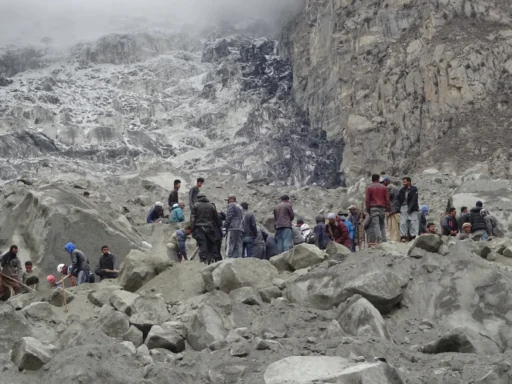The Israel-Hamas ceasefire, a significant milestone in a prolonged conflict, has garnered attention globally. Following intensive negotiations, the Israel Cabinet is set to vote on a deal centered around a crucial hostage release agreement. This development marks a hopeful yet cautious step toward peace.
Israel-Hamas Ceasefire: Agreement on Hostage Release Reached
Introduction to the Israel-Hamas Ceasefire
The ongoing conflict between Israel and Hamas has been a focal point of international concern for decades. Amid the destruction and loss of life, ceasefires have served as temporary pauses in hostilities. The latest ceasefire, however, is distinguished by its focus on a humanitarian element—the release of hostages—which could pave the way for more sustainable peace efforts.

Historical Context of the Conflict
Key Events Leading to the Ceasefire
The Israel-Hamas conflict is rooted in a complex history of territorial disputes, political disagreements, and religious tensions. Recent escalations brought severe casualties and heightened international calls for a resolution. The hostage crisis emerged as a pivotal issue, compelling both parties to consider dialogue.
Importance of Hostage Release in Negotiations
Hostage-taking has been a contentious strategy in the conflict, symbolizing the high stakes involved. The release agreement reflects a breakthrough, emphasizing the human cost of the conflict and the potential for empathy-driven resolutions.
Details of the Current Ceasefire Agreement
Key Terms and Conditions
The agreement outlines specific conditions, including a cessation of hostilities, the release of hostages in phases, and measures to ensure humanitarian aid reaches affected regions. Transparency and accountability are integral to the deal.
Timeline for Implementation
Implementation is planned over several weeks, with periodic reviews to address potential violations. The phased approach aims to build trust and minimize risks of abrupt escalations.

Role of Mediators in Achieving the Agreement
Countries and Organizations Involved
International mediators, including Egypt, Qatar, and the United Nations, played pivotal roles in facilitating dialogue. Their diplomatic efforts underscored the importance of impartiality and persistence.
Challenges Faced During Negotiations
Negotiations were fraught with obstacles, including mistrust between parties and external pressures. The breakthrough reflects the mediators’ ability to navigate these complexities effectively.
Implications of the Ceasefire on the Region
Political Impact on Israel and Hamas
For Israel, the ceasefire represents a political balancing act between security concerns and humanitarian considerations. For Hamas, it signals a rare concession that could reshape its standing among supporters.
Humanitarian Benefits
The ceasefire promises immediate relief for civilians, enabling the delivery of essential supplies and medical aid. It also offers families the hope of reuniting with their loved ones.

Global Reactions to the Ceasefire
Statements from Key Nations
Countries such as the United States and members of the European Union have welcomed the ceasefire, emphasizing its potential to stabilize the region. Arab nations have expressed cautious optimism, urging further dialogue.
Public Opinion Worldwide
Public sentiment has been largely supportive, with global citizens advocating for sustained peace and criticizing the prolonged suffering caused by the conflict.
Potential Challenges to Sustaining the Ceasefire
Internal Opposition within Israel and Hamas
Hardline factions on both sides pose a risk to the ceasefire’s longevity. Managing dissent will require strong leadership and clear communication.
Risk of Escalation
Unforeseen provocations or misinterpretations could reignite hostilities. Mechanisms for conflict resolution will be crucial to address these risks promptly.
Historical Success and Failures of Past Ceasefires
Lessons Learned
Past ceasefires have highlighted the importance of mutual accountability, robust monitoring, and addressing underlying grievances. Ignoring these lessons risks repeating history.
Applying Lessons to the Current Agreement
Incorporating lessons from past failures, this ceasefire emphasizes phased implementation, mediator involvement, and humanitarian priorities, enhancing its chances of success.

FAQs
What is the significance of the Israel-Hamas ceasefire?
The ceasefire is significant as it addresses both immediate humanitarian concerns and long-term peace prospects, setting a precedent for future agreements.
Who mediated the Israel-Hamas ceasefire agreement?
Key mediators included Egypt, Qatar, and the United Nations, whose diplomatic efforts bridged significant divides between the parties.
How will the hostage release be conducted?
The release will occur in phases, monitored by international observers to ensure transparency and adherence to the agreement.
What challenges might threaten the ceasefire?
Internal opposition, external provocations, and historical mistrust are potential threats that could undermine the ceasefire’s stability.
How has the international community reacted to the ceasefire?
The ceasefire has received widespread support from governments and citizens globally, highlighting its perceived importance and potential impact.
What are the long-term prospects for peace between Israel and Hamas?
While the ceasefire is a step forward, lasting peace will require addressing deep-seated issues, fostering trust, and sustained international support.

The Israel-Hamas ceasefire, marked by a landmark agreement on hostage release, offers a glimmer of hope in a historically tumultuous conflict. While challenges remain, the collaborative efforts of mediators and the commitment of both parties to prioritize humanitarian concerns lay a foundation for a more peaceful future.
Source : NBC News




